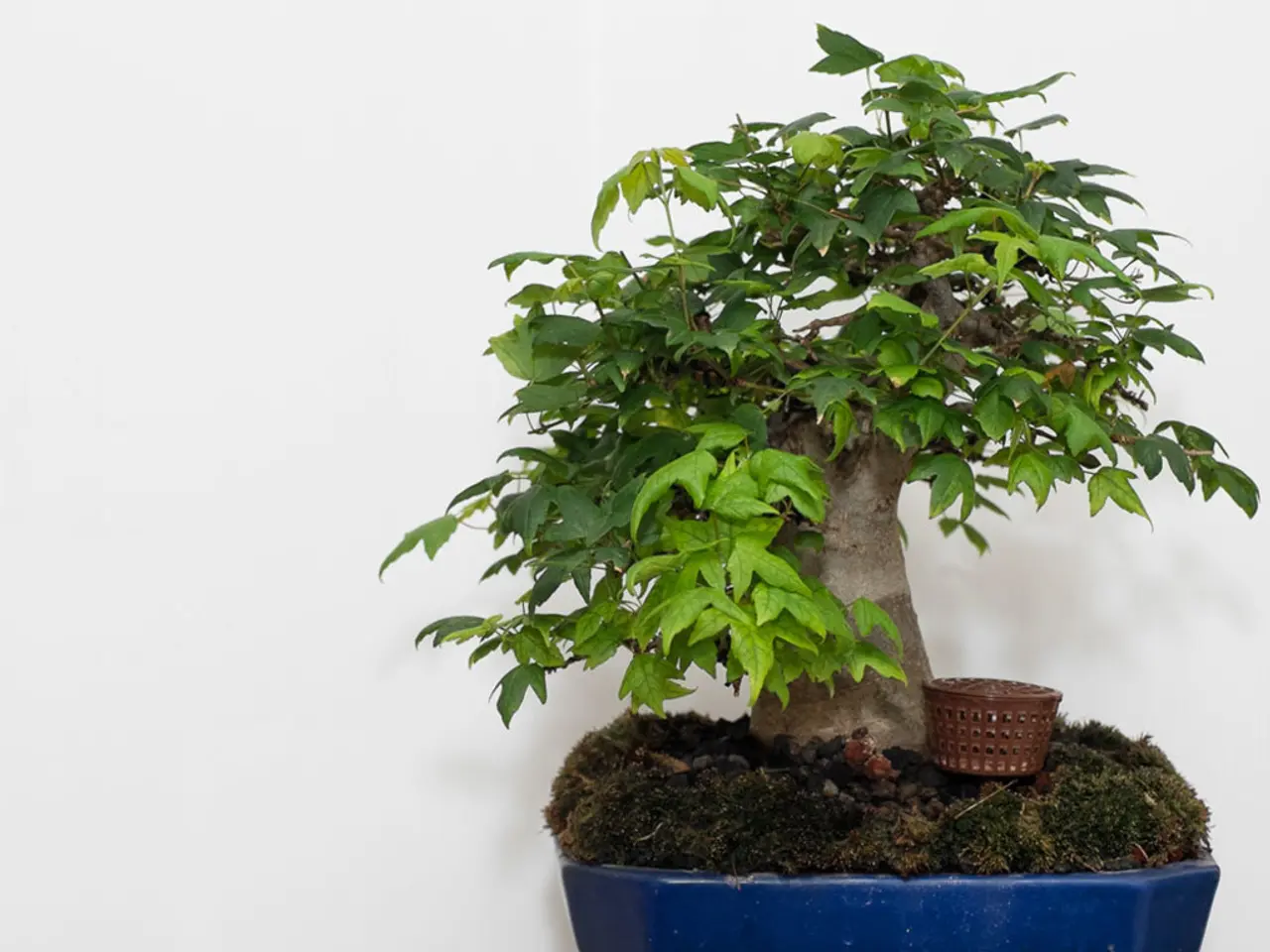Successful Bonsai Propagation for Beginners: Suggested Species for Novice Growers
For those embarking on a journey into the world of bonsai, understanding the right species to start with is crucial. Here, we explore the top choices for novice cultivators, each offering a unique blend of hardiness, adaptability, and forgiveness for beginner care mistakes.
Chinese Elm, Dwarf Black Olive, Ficus, Japanese Maple, and Common Ivy (Hedera helix 'Minima') emerge as the best bonsai species for beginners.
Chinese Elm (Ulmus parvifolia)
Highly recommended for beginners, Chinese Elm boasts vigorous growth, making it an ideal candidate for clip-and-grow pruning. This versatile tree thrives indoors or outdoors with sufficient light, and its ability to produce fresh leaves rapidly after pruning makes it a forgiving choice for those learning bonsai care [1][3][5].
Dwarf Black Olive (Bucida spinosa)
With its slow growth, minimal internodes, and architecturally dramatic, contorted branching, Dwarf Black Olive is an excellent choice for beginners developing patience and styling skills. This evergreen tree has a brief deciduous phase, adding to its allure [2].
Ficus
Ficus is another popular beginner favourite due to its adaptability to various conditions and responsiveness to pruning and shaping. Its attractive foliage and manageable care requirements strike a balance between aesthetics and ease of maintenance [3].
Japanese Maple (Acer palmatum)
Japanese Maple, like Ficus, adapts well to various conditions and responds well to pruning and shaping. Its vibrant foliage adds a touch of beauty to any bonsai collection [3].
Common Ivy (Hedera helix 'Minima')
Often created as a miniature bonsai (mame bonsai), Common Ivy is another accessible choice for beginners, particularly for indoor bonsai. Its resilience, adaptability to varied conditions, and ease of shaping make it an ideal starting point [4].
The Benefits of Choosing These Species
These species are suitable for first-time propagators because they:
- Are tolerant of pruning and repotting, important for learning training techniques.
- Can grow in a range of environments (indoor/outdoor).
- Recover well from growth stress (such as trimming and rooting).
- Have manageable growth rates that help beginners observe changes without being overwhelmed.
Embracing the art of bonsai cultivation can lead to a deeper connection with nature and a serene experience. With patience and attention to detail, these hardy, adaptable species can be coaxed into intricate, beautiful shapes, making them the perfect starting point for any bonsai enthusiast.
[1] Bonsai Empire
[2] The Bonsai Garden
[3] Bonsai Tonight
[4] Bonsai4me
[5] Bonsai Bark
Chinese Elm and Common Ivy, with their tolerance of pruning, ability to grow indoors or outdoors, and manageable growth rates, are ideal for beginners learning bonsai care. The Dwarf Black Olive, known for its dramatic, contorted branching and slow growth, serves as an excellent choice for those patience and styling skills, while Ficus and Japanese Maple, with their adaptability to various conditions and vibrant foliage, cater to those seeking a balance between aesthetics and ease of maintenance.




